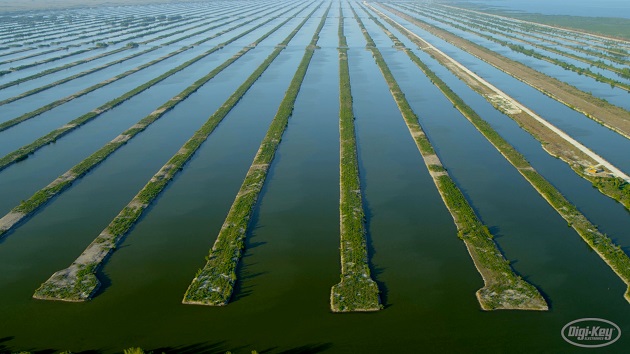The Internet of Things (IoT) is almost ubiquitous now, it’s everywhere. And agriculture is truly one of the areas where it can have the biggest impact. Smart farming in the agriculture industry is an emerging concept that has the opportunity to revolutionize farming for the digital era. The driving force of smart farming is IoT which connects the agriculture process from start to finish to be more data-driven, data-enabled and efficient, while also optimizing the human labor involved.
Solving the challenges of modern agriculture will set farmers, agtech designers and others involved in the technology up for explosive growth this year and beyond. I’m excited about the future of smart agriculture, and the benefits it will have on the entire farming community.
Our new three-part video series on smart agriculture focuses on this farming approach. Farmers can integrate smart agriculture into their practices in many different ways, including through the use of drones and turning farmers into licensed pilots, and through new ways of farming through ocean farming, precision mapping systems and artificial intelligence. All of the unique solutions highlighted in the video series share how the next generation of farming will be defined. And as they do, Digi-Key is ready to equip farmers with everything they need, including sensors, cellular technology and more.
Geographic Equity
One of our key concerns is feeding the world’s population – that’s 9 billion people and counting that we need to feed with a fixed amount of arable land. In order for us to succeed, we’ve gotten to a point where we need to scale our operations for efficiency.
Longer range technologies are needed for these big farms – cellular is the obvious choice, and the two communications options in agtech are LoRa (long range) technology and a lower version of cellular technology called CAT-M and Narrow Band IoT. Most IoT features in a smart agriculture setup like moisture sensors don’t need to transmit voice and sound, they just send a bit of data here and there over long-range technology. These communications options are just coming to the mass-market forefront.
The Digi-Key Position
While Digi-Key is not backing a specific supplier, we’re actively supporting the market and the innovators in this realm. We’re working to support the creation of products and services that help feed the world. And we believe the innovators in the regions where this work is happening know the requirements best of their specific regions. We need the local innovators to specify their own requirements and get everyone collaborating to support global innovation.
It’s really about understanding the future farm, not just the traditional farm. If we can focus on what the farms of tomorrow could look like, each community around the globe could have their own sustainable farm, no matter their location, climate, or other barriers.
The Future Farmstead Vision
So, what does the farmstead of the future look like? It’s the industry least penetrated by digital technology and agriculture is a complex moving system that technology needs to fit into, not the other way around.
We believe the future farm uses resources as efficiently as possible. Precision farming allows the industry to reduce the number of herbicides and pesticides in the environment and minimize water contamination. So many ecosystems benefit from precision farming. Other benefits and innovations include the visualization of data, autonomous systems, and overall farm infrastructure.
Our supplier partners provide the hardware, but what we’re seeing is there are other entities like systems integrators and solution providers that bring together the hardware, software and services pieces specific to the farmer. One of our goals with agriculture is to work with everyone from systems integrators to the end customer, and the farmers and growers who work tirelessly to feed the world.
The intersection of new technologies and modern farmers creates the need for new innovations. To farm better, we must farm different.
A new wave of Innovation
Ten percent of farmers in North America are already using soil sensors in as many as 5 million acres of land with promising results. Precision farming is expected to reach a 32% market share by 2025 due to the rising need for agriculture technologies. New innovations in both equipment and education will fuel this growth. Farming technologies that increase efficiency and crop yield are just one example of how technology is redefining what it means to grow and harvest food in today’s connected world.
New approaches to agriculture and farming technologies are required to address the ever-changing nature of our modern world. Innovators combined with willing professionals across the industry will chart a new path forward to grow, harvest, and feed the people of this planet. The future of farming begins when we farm differently and make new technology accessible to all.









